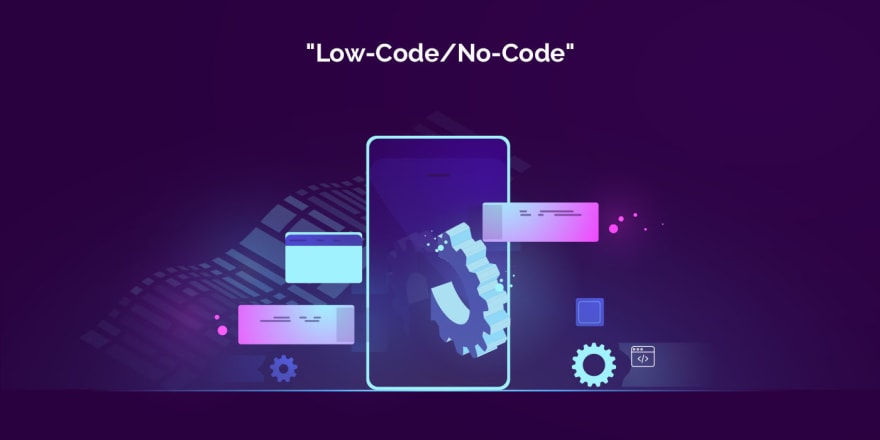
A professor, to highlight the importance of communication, gave a simple exercise involving the whole class. He wrote a tongue twister
“Fred fed Ted bread and Ted fed Fred bread”
on a piece of paper and gave it to the first student sitting on the first row and asked him to whisper whatever he read in the next student’s ears. The second student was asked to repeat whatever he heard to the third student, and so on. This process was repeated till the student in the last row and finally, he/she was asked to say what he heard. He said,
“Fred said bake bread, Fred said eat bread”!
Talk about lost in translation!
This simple example helps us understand how much information and, importantly, meaning can be lost in communication. How difficult communication can be even in person, let alone through other mediums like digital. A similar predicament happens when business and I.T. communicate, particularly regarding requirements or expected outcomes.
Businesses and I.T. have their silos, and they speak different languages.
One, the user’s language, expectations, and markets. And the other, the language of technology, of bits and bytes and frameworks. Invariably when
“Fred feeds ted bread,”
it is understood as
“Fred said bake bread.”
In his seminal work “Business at the Speed of Thought,” Bill Gates wrote `If the 1980s were about quality and the 1990s were about reengineering, then the 2000s will be about velocity. Speed of development and quick-to-market products has never been more critical than today. Take the case of the ongoing pandemic. Every single aspect of our life has been upended. Companies and businesses are scrambling to upgrade or modify their delivery chains. In such exceptional circumstances, velocity or speed of delivery is of utmost importance.
A knee-jerk reaction to ensure delivery speed would be to hire the right engineering talent and just put them to work, right? Well, it turns out that’s not always the case. One, talent is scarce, and second, it is expensive. According to a survey by TechRepublic
https://www.techrepublic.com/article/cio-jury-83-of-cios-struggle-to-find-tech-talent/,
a whopping 83% of CIOs found it a struggle to fill positions, particularly engineering. Even if you manage to cross these hurdles, merely increasing the number of people to solve a problem never really works. One could put a case for Automation. Automation is a perfect solution to increase the speed of execution. However, automated tools will still have to be built, configured by the I.T., thereby repeating the whole development process. The challenges enterprises face in the development process, such as speed, clarity of vision, are repeated.
Challenges in current development models
I.T. and business need a common language to convey, communicate, and understand business goals uniformly.
Speed of development and delivery separates the winners from competitors in business.
As long as corporate I.T. sanctions it, engineering should not be restricted to I.T. only. Ideas and solutions are not the sole purviews of engineers. Engineering can and should be inclusive, i.e., Citizen development and Citizen I.T. as well.
What is the Low-Code Platform?
Forrester defines low-code development platforms as:
“Products and/or cloud services for application development that employ visual, declarative techniques instead of programming and are available to customers at low- or no-cost in money and training time to begin, with costs rising in the proportion of the business value of the platforms.”
Gartner characterizes it as platforms that provide “rapid application development (RAD) features for development, deployment, and execution – in the cloud.”
Low-Code Development (LCD Henceforth) is an approach that involves visual development tools and an interactive development process. LCD is declarative in nature. In the declarative style of development, instead of focussing on how to do something, the focus is on what needs to be done. The logic of how to do something is abstracted behind visual components.
How does Low-Code work with visual development tools?
LCD has a strong emphasis on graphical tools. So instead of extensive coding, developers use pre-built components by simply dragging and dropping. Low-Code enables anyone, literally anyone, to build applications and engineer solutions regardless of their technical ability. This empowers the citizen’s I.T. development. Additionally, the requirements are more clearly implemented since the development can be done by the business as well. With LCD, the business and product owners can engineer solutions independently without depending on I.T. So the goals and features, and vision of the business are translated into solutions more accurately.
What are the Features of Low-Code Platform?
At its heart, LCD aims to bring business and I.T. together to deliver on the business goals faster and better. Far too often, bottlenecks caused by inter dept communication drag the development process down. Understanding business requirements into something which can be expressed using technology is challenging. LCD is the perfect solution for this silo-induced communication bottleneck.
With LCD, businesses or anyone authorized in the company can deliver or transform an idea or requirement into a working solution. With abstraction and Automation enabled, the time to market is reduced dramatically. Companies no longer need to depend on I.T. to engineer quick solutions such as automated tasks or prototypes.
LCD is perfect for trying out new tools and prototype solutions. Since LCD is based on visual tools such as drag and drop components, the speed of development is fast, and the development process itself is nimble and agile.
Not all applications and solutions can be built using the out-of-the-box solutions provided by LCD platforms. But LCD can be customized to create new components and reusable modules with the standard development process. LCD also works with complex backend and legacy systems. Along with inbuilt tools and IDEs, LCD provides connectors to set up connections to database and APIs
What are the benefits of Low-Code?
With Low-Code or no code used to develop, the speed of development is faster, and time to market is brought down drastically. Ready-to-use components are tested and ready to be deployed. So testing time and deployment time are brought down considerably.
LCD enables everyone to be an engineer or developer. In a limited way, of course! The concept of citizen I.T. and citizen development are reinforced with LCD. This allows requirements to be easily translated into implementation, mainly when the business uses a low-code platform.
LCD works well with all existing development processes like Agile, Scrum. Additionally, LCD is compatible with APIs, New methods. The addition of new code to configure custom modules is also possible with LCD. The bottom line is that LCD provides an added advantage to the existing development process of an enterprise.
Although I.T. is going nowhere and it will still be relevant, LCD enables development at a fraction of the cost. Mainly when it comes to repeated automated tasks, LCD provides tremendous cost benefits.
The benefits of having citizen developers are manifold. Citizen IT armed with LCD helps in reducing the IT backlog and improves internal processes. Consequently, innovation and digital transformation in an organization happen at a much faster rate.
How does Low-Code work with APIs?
APIs are the building blocks of great software solutions. They are ubiquitous and everywhere. At its heart, APIs are all about abstracting complexity or business logic into a simple, easy-to-use interface.
Does this sound familiar?
Of course, it does!
That’s a key goal of Low-Code as well.
As we saw above, Low-Code aims to build rapidly complex applications with minimal code so that solutions can be delivered faster and I.T. can closely replicate what the business wants. Almost all Low-Code service providers have prebuilt APIs from various providers like Google Suite, popular Social Media sites, single sign-on. They can be easily chosen and integrated with the App that is being built. Like the drag and drop interface for building low-code apps, app integration with prebuilt APIs is a breeze.
For Custom API integration, Low-Code Apps have plugins and provisions to create high-level model extensions. Write custom code for interacting and connecting to cloud services such as AWS, Google Cloud. Almost all low- and no-code platforms provide ways for programmers to create high-level model extensions for applications. Platforms typically support these extensions through APIs.
What is the future of Low-Code development?
Gartner predicts that by 2024, an astounding 65% of application development activity will be via low-code application development.
https://www.outsystems.com/1/low-code-application-platforms-gartner/
And as per an infographic by Impactmybiz.com, LCD will be a 27 billion dollar industry by 2022.
These are astounding numbers, and enterprises would do well to start investing in LCD. LCD empowers or enables everyone in the enterprise to focus on business goals than complex technology. In addition to ease of implementation, LCD helps in faster deployment of solutions, which is the critical differentiator in modern times.LCD is compatible with legacy systems as well as agile practices. Whatever is the enterprise development model, LCD integrates itself well.








Top comments (0)